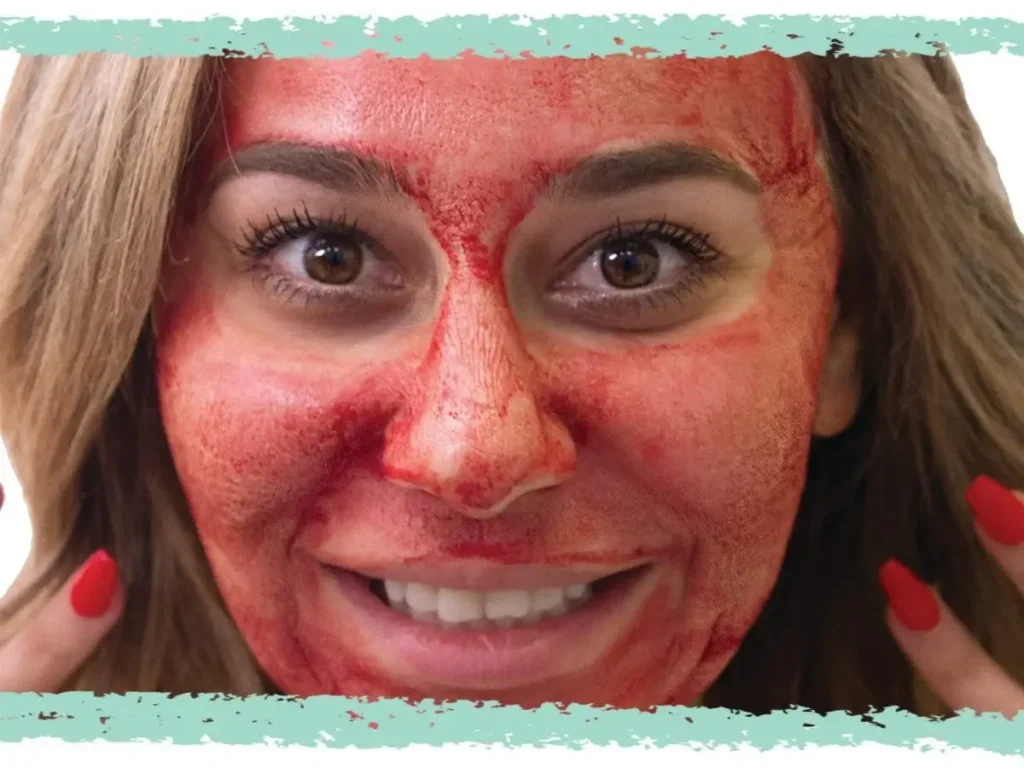Microneedling is a cosmetic procedure that has been gaining popularity in recent years. It involves using a device to make small punctures in the skin. This triggers the skin’s healing response, which can result in several benefits, such as improved skin texture and reduced wrinkles.
While microneedling is generally considered safe, there are a few side effects that you should be aware of. These include redness, swelling, and bruising. Additionally, if the procedure is not done properly, there is a risk of infection.
In this article, we will examine the potential side effects of microneedling. By understanding these side effects, people can make an informed decision when considering this treatment.

How Does Microneedling treatment Work?
Microneedling is a minimally invasive cosmetic procedure that is used to improve the appearance of the skin. It involves using the best microneedling pens that have fine needles to create tiny punctures in the skin. This triggers the body to produce new collagen and elastin, which can help to reduce the appearance of scars, fine lines, and wrinkles.
Microneedling Side Effects
Microneedling is a minimally invasive cosmetic procedure that involves puncturing the skin using tiny needles to stimulate collagen production and improve skin texture. While it is generally considered safe, there is a possibility of side effects, if the procedure is not performed correctly.
Skin Irritation
Microneedling involves puncturing the skin with tiny needles which can cause some skin irritation. The skin may feel dry, tight or itchy after the treatment. In some cases, the skin can become red, swollen or inflamed, especially if the needles used were too long or if the treatment was performed too aggressively. The skin may also feel sensitive, tender, or painful to the touch for a few days following the procedure, especially if the area treated is particularly sensitive or if the skin is already sensitive due to a pre-existing condition. It is important to follow the aftercare instructions given by your practitioner to reduce the risk of skin irritation and to aid in the healing process.

Bruising
Microneedling can result in bruising for several reasons. During the procedure, the tiny needles used to create micro-injuries in the skin can sometimes puncture small blood vessels, resulting in bruising. Additionally, clients who are more prone to bruising may experience this side effect more frequently. In some cases, the pressure applied during the procedure can also cause bruising. Therefore, It is important to discuss any concerns about bruising with your skincare provider before undergoing microneedling, and to follow any aftercare instructions carefully to minimize the risk of bruising.
Scarring
Scarring can occur if the needles are too long or if the treatment is too aggressive, causing damage to the deeper layers of the skin. It can also occur if the skin is not properly prepared or if it is not allowed to heal properly after the treatment.
Additionally, scarring may develop if there is an underlying medical condition or if the individual is prone to scarring. In some rare cases, an infection may also lead to scarring.
To minimize the risk of scarring, it is essential to work with a skilled and experienced practitioner who uses appropriate needle lengths and techniques. Proper skincare before and after treatment can also help to prevent scarring.
If scarring does occur, treatments such as scar creams, laser therapy or dermabrasion may be necessary to improve the appearance of the scar. It is important to discuss any concerns about scarring with the practitioner before treatment.
Minor Bleeding
Minor bleeding can occur during microneedling due to the tiny needles puncturing the skin. The needles create micro-channels in the skin, which can cause mild bleeding in some areas. However, the bleeding is typically minimal and stops quickly as the body’s clotting mechanism kicks in. It is important to note that excessive bleeding during microneedling is not normal and may indicate an underlying medical condition, and it is always recommended to consult with a healthcare professional if this occurs.
Hyperpigmentation + Inflammation
Hyperpigmentation is a condition where the skin produces an excess amount of melanin, the pigment that gives skin its color. This can result in dark spots, patches, or areas of the skin becoming darker than the surrounding skin. Microneedling can trigger hyperpigmentation if the skin is already prone to it, or if the skin is not properly protected from the sun after the treatment.
Inflammation is a natural response of the body to injury or infection, and microneedling causes a controlled injury to the skin. Some degree of redness and swelling is expected after microneedling, but excessive inflammation can occur if the needles are too long, too deep, or too frequent. This can cause pain, swelling, and sensitivity, and can lead to other side effects like infection or scarring.
To minimize the risk of hyperpigmentation and inflammation, it is important to choose a qualified and experienced provider, follow all pre- and post-treatment care instructions, and avoid exposing the skin to direct sunlight for several days after the treatment. If you experience any unusual side effects, such as severe pain or prolonged redness, you should seek medical attention immediately.
Infection
Microneedling involves creating small punctures in the skin with tiny needles, which can potentially lead to infection if the skin is not properly cleaned before the procedure or if unsterilized equipment is used. Infection can also occur if the skin is not properly cared for post-treatment, or if the patient has an underlying skin condition that increases their susceptibility to infection. Symptoms of infection may include redness, swelling, pain, and discharge from the treated area. If you suspect an infection, it is important to seek medical attention as soon as possible to prevent further complications.
Granuloma
Granuloma formation is a rare but possible side effect of microneedling. Granulomas are small, raised bumps that can form under the skin’s surface. They occur when the immune system responds to a foreign substance, such as the needles used in microneedling, by producing an excessive amount of scar tissue.
Granulomas can occur weeks or even months after a microneedling treatment. The development of granulomas is more common in individuals with underlying autoimmune or inflammatory conditions.
If you experience granuloma formation after microneedling, it is important to seek medical attention. Treatment options may include topical or injectable steroids or surgical removal of the granulomas. It is also important to note that the risk of granuloma formation can be minimized by choosing a trained and experienced practitioner and following proper aftercare instructions.
Tips to Reduce Microneedling Side Effects
If you’re considering microneedling to improve your skin’s appearance, it’s important to be aware of the potential side effects. While most people don’t experience any serious issues on how to do microneedling at home, some may experience redness, swelling, bruising, or infections. Here are a few tips to help reduce the risk of side effects:
- Choose an experienced practitioner: Choose a practitioner who is experienced and well-trained in microneedling techniques to reduce the risk of side effects.
- Follow aftercare instructions: Make sure to follow the aftercare instructions provided by your practitioner. This will help to minimize any potential side effects and promote healing.
- Avoid sun exposure: Avoid sun exposure for at least 24 hours after the procedure to reduce the risk of sunburn and other complications.
- Use mild skincare products: Use mild skincare products for a few days post-procedure to minimize the risk of irritation.
- Avoid makeup and heavy products: Avoid wearing makeup and heavy skincare products for a few days to reduce the risk of clogged pores and breakouts.
- Avoid strenuous activity and exercise: Avoid strenuous activity and exercise for a few days to minimize the risk of swelling and inflammation.
- Stay hydrated: Drink plenty of water and keep yourself hydrated to promote healing and reduce the risk of dryness and irritation.
- Be patient: Be patient and wait for the healing process to take its natural course. Avoid pulling or scrubbing the skin, as it can make the skin more vulnerable to infections and other complications.
Conclusion
Microneedling is considered to be a safe and effective treatment option for various skin conditions. However, like any medical procedure, there are some potential side effects that patients should be aware of. Some of the common side effects include redness, swelling, bruising, and mild discomfort. These side effects are usually temporary and can be easily managed with proper care.
In rare cases, microneedling can cause more serious side effects such as infection, scarring, or hyperpigmentation. These risks can be minimized by ensuring that the procedure is done by a qualified and experienced practitioner using sterile and properly maintained equipment.
Overall, while there are some potential side effects associated with microneedling, the benefits of the treatment often outweigh the risks. Patients should discuss their concerns and expectations with their providers in advance to ensure that they have a positive and successful treatment experience.



